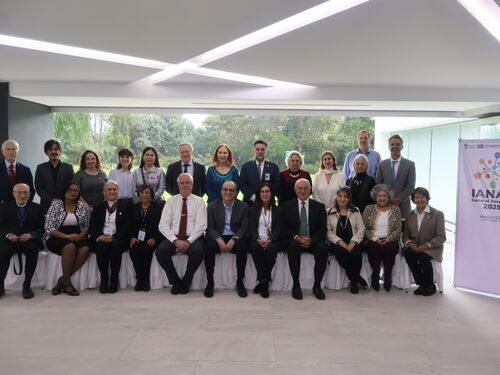Will COVID-19 Permanently Change Cancer Care?
Feature Story
Last update July 20, 2020
COVID-19 cases are surging again in parts of the U.S., but that doesn’t mean other medical issues can be put on hold.
Cancer care is particularly complex in the age of COVID-19, said panelists during a July 13 and 14 National Academies webinar, Opportunities and Challenges for Using Digital Health Applications in Oncology. It involves a spectrum of services — including screening, diagnostics, surgery, radiation, chemotherapy, palliative care, and survivorship care.
“Different types of cancer have different degrees of urgency,” said Lawrence Shulman, director of the Center for Global Cancer Medicine at the University of Pennsylvania. “Low-grade prostate cancers grow slowly, so patients may be able to delay treatment with few consequences; whereas leukemia requires more frequent and immediate care.”
In addition, there is little guidance on what type of visits can or should be done via telehealth versus in person, noted Mia Levy, Sheba Foundation director at Rush University Cancer Center. “What is the impact of telehealth on cancer care outcomes? How is it affecting the time, frequency, and amount of care? We’re learning in real time during this public health emergency,” Levy said.
Telehealth visits can fill a critical need for newly diagnosed cancer patients who are seeking a second opinion. Some health plans actually require a second opinion, especially when a doctor recommends surgery or an experimental therapy.
While telehealth should, ideally, expand access to care, coverage and payment models vary.
The ability to practice medicine across state lines is also currently in flux and often unclear.
“Patients are hesitant — rightly so — to travel by air or vehicle to get second opinion,” said Elizabeth Belmont, corporate counsel at MaineHealth. “The impact of the ability to provide telehealth consultations across state lines cannot be overstated. But if a physician is not licensed in the state where the patient is, that can be potentially problematic.”
The pandemic is also changing the way cancer clinical trials are conducted, with remote clinical trials (also known as decentralized clinical trials) becoming more common.
“It would be transformative if patients don’t have to travel hundreds of miles to a trial site,” said Paul Kluetz, deputy director of the U.S. Food and Drug Administration’s Oncology Center of Excellence. “Several digital health technologies focus on remote monitoring of clinical trial participants — so we have a lot of opportunity to make trials more efficient and patient-friendly.”
When switching from in-person to partially or fully remote trials, researchers should take extra caution to minimize variation in data collected, added Kleutz. For example, a large health system may have different data collection practices than local facilities where patients undergo lab work or imaging. The FDA also continues to navigate the most appropriate way to report adverse events that occur during remote trials.
Panelists emphasized the importance of making better use of data we already have, including data from electronic health records (EHRs).
EHRs can provide comprehensive, ongoing information about a patient’s history — wherever and however that care takes place. Further, EHR data is more likely to be inclusive of populations that are historically underrepresented in cancer clinical trials.
“Clinical trials are the gold standard for advancing cancer research, but there were logistical barriers, even before the pandemic,” said Neal Meropol, Flatiron Health’s head of medical and scientific affairs. “Often, clinical trial participants are older and less diverse in racial and ethnic background than the general population.”
Although telehealth visits and remote trials are becoming the new normal for now, it’s hard to say which changes will stick, concluded Shulman.
“If there’s a silver lining, it’s that COVID-19 accelerated value-based care. We have found ways to increase access to trials and care for patients outside our immediate area, and we have more flexibility to cover things that were not paid for before,” he said. “And in the future, we’re more prepared to face challenges like COVID-19.”
Further Reading:



